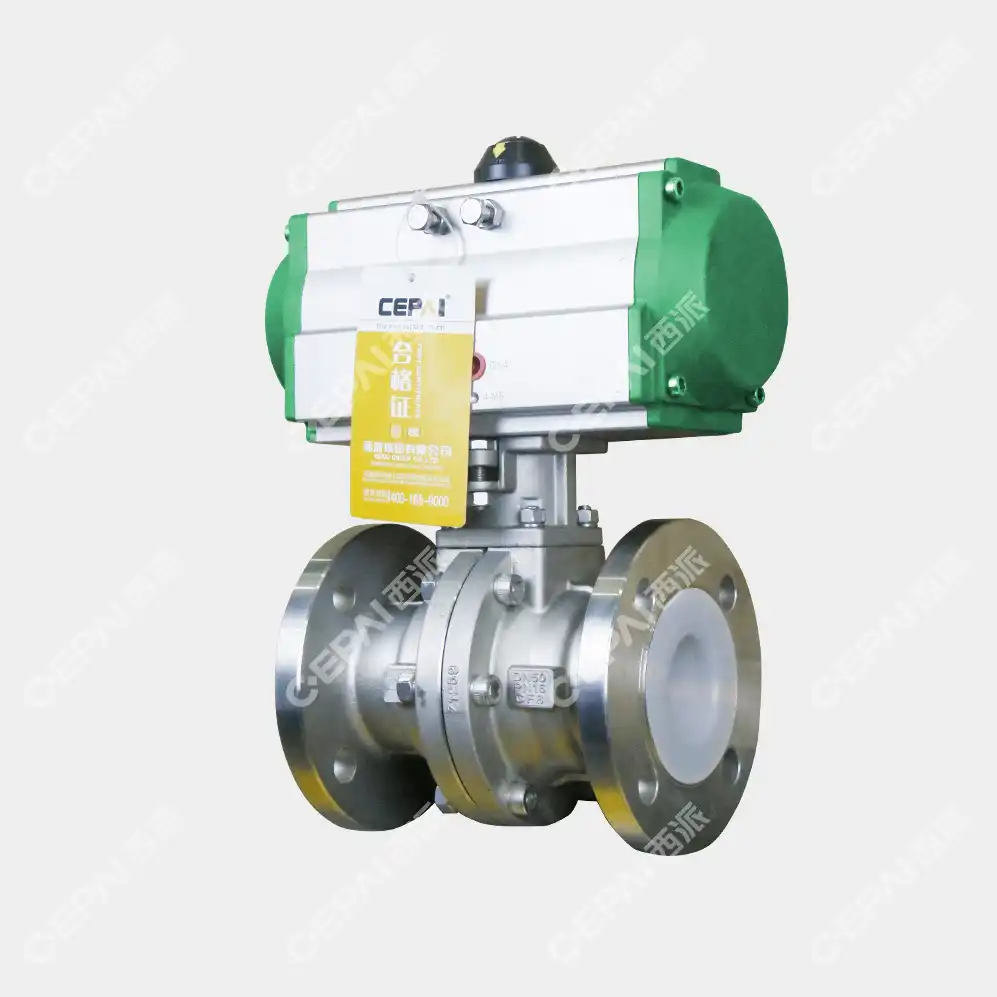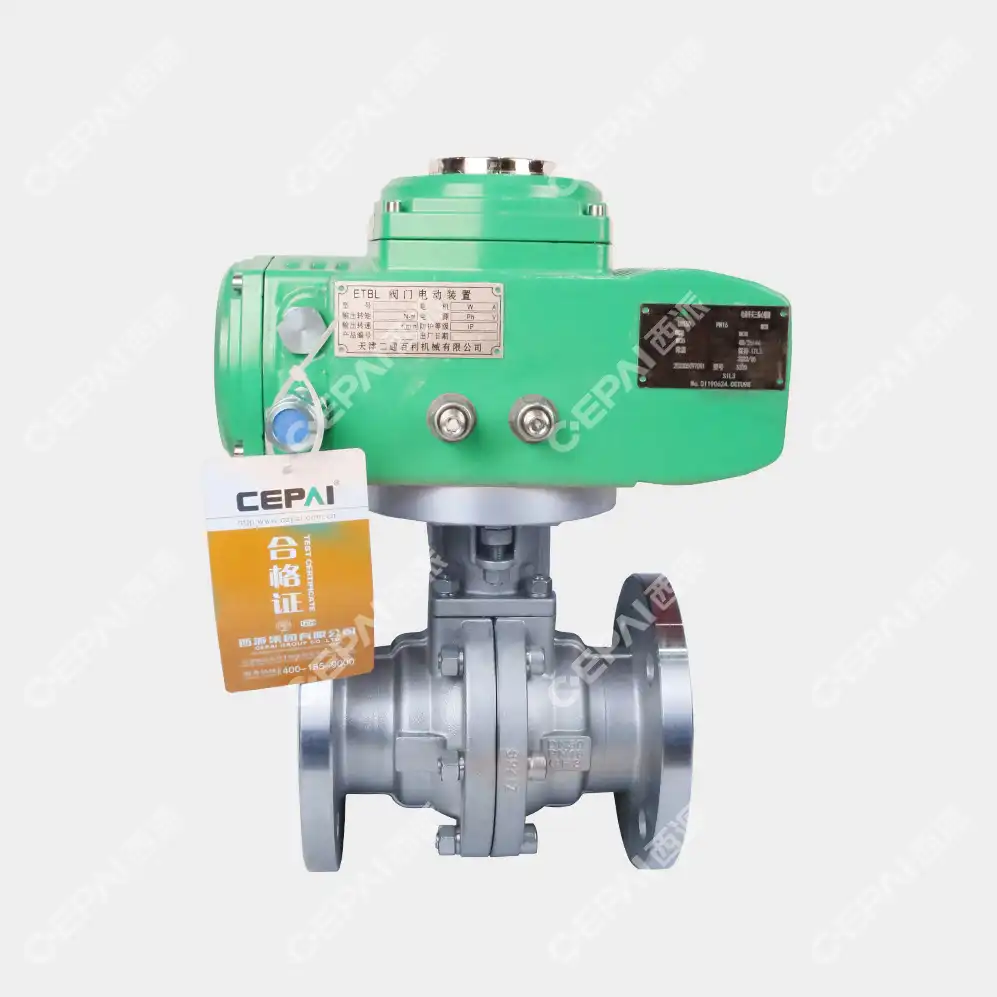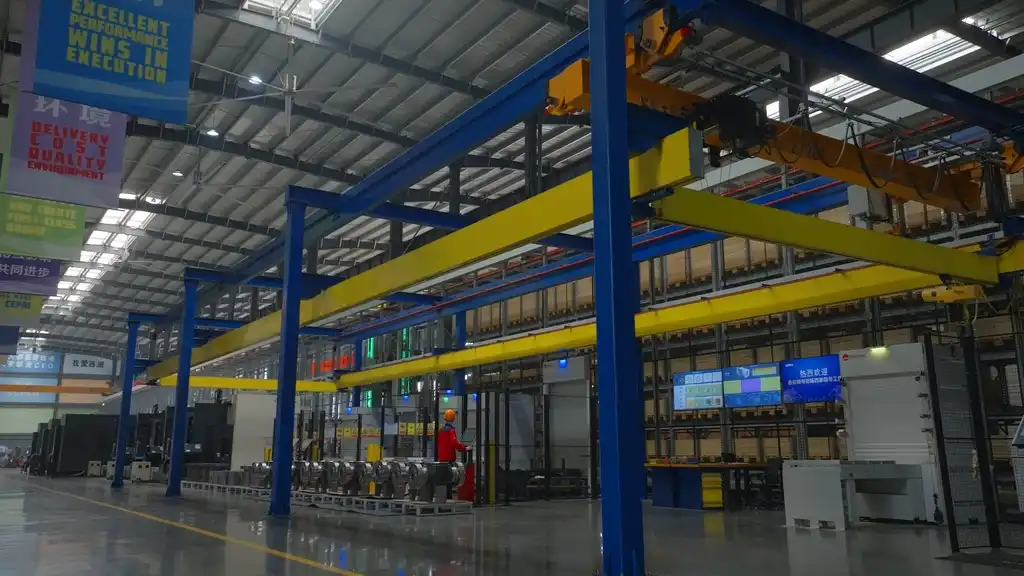Understanding Wear-Resistant Electric Ball Valves in Slurry Applications
Composition and Design of Wear-Resistant Electric Ball Valves
Wear-resistant electric ball valves are meticulously engineered to withstand the harsh conditions presented by slurry media. These valves feature a spherical closure unit, or ball, that rotates to control flow. The ball and seat are typically constructed from materials such as tungsten carbide, ceramics, or specially hardened alloys. These materials exhibit exceptional resistance to abrasion and erosion, crucial qualities when dealing with slurries containing abrasive particles.
The electric actuation system of these valves allows for precise control and automation, enhancing their suitability for slurry applications. This system typically includes a motor, gearbox, and control unit, enabling remote operation and integration with process control systems. The combination of wear-resistant materials and electric actuation results in a valve that can maintain its integrity and functionality even in the most demanding slurry environments.
Benefits of Using Wear-Resistant Electric Ball Valves in Slurry Systems
The adoption of wear-resistant electric ball valves in slurry systems offers numerous advantages. Firstly, their robust construction significantly extends the operational lifespan of the valve, reducing the frequency of maintenance and replacement. This longevity translates to lower operational costs and minimized downtime, critical factors in industries where continuous operation is essential.
Moreover, the electric actuation allows for precise flow control, which is particularly valuable when dealing with slurries of varying consistencies. The ability to fine-tune flow rates enhances process efficiency and product quality. Additionally, the remote operation capability of these valves improves safety by minimizing the need for personnel to be present in potentially hazardous areas where slurries are being processed.
Challenges and Considerations in Slurry Valve Selection
While wear-resistant electric ball valves are well-suited for slurry applications, their selection and implementation require careful consideration. The specific composition of the slurry, including particle size, hardness, and concentration, must be taken into account when choosing valve materials and designs. Factors such as flow rates, pressure requirements, and temperature conditions also play crucial roles in valve selection.
It's important to note that even wear-resistant valves will eventually experience some level of wear. Regular inspection and maintenance schedules should be established to monitor valve performance and anticipate replacement needs. Additionally, the integration of wear-resistant electric ball valves into existing systems may require modifications to piping, control systems, or operational procedures, necessitating a holistic approach to their implementation.
Performance Analysis of Wear-Resistant Electric Valves in Slurry Environments
Erosion Resistance and Longevity
The performance of wear-resistant electric valves in slurry environments is primarily characterized by their ability to resist erosion and maintain functionality over extended periods. Advanced materials such as tungsten carbide and ceramic composites used in these valves exhibit exceptional hardness and toughness, enabling them to withstand the constant abrasive action of slurry particles. Studies have shown that properly selected wear-resistant valves can maintain their integrity for significantly longer periods compared to standard valves when exposed to similar slurry conditions.
The longevity of these valves is further enhanced by their design features. For instance, some wear-resistant electric ball valves incorporate floating ball designs that allow for a degree of self-adjustment, compensating for wear and maintaining an effective seal. This design characteristic contributes to extended service life and reduced maintenance requirements, making these valves a cost-effective solution for long-term slurry handling operations.

Flow Control Precision and Reliability
Electric actuation in wear-resistant valves brings a new level of precision to flow control in slurry applications. The ability to accurately adjust valve positions allows for fine-tuning of flow rates, which is crucial in processes where slurry consistency may vary. This precision contributes to improved process control, product quality, and operational efficiency.
Reliability is another key aspect of performance in slurry environments. Wear-resistant electric valves are designed to maintain consistent operation even under challenging conditions. The combination of durable materials and electric actuation ensures that these valves can repeatedly perform open-close cycles or maintain specific positions without degradation in performance. This reliability is particularly valuable in critical processes where valve failure could lead to significant downtime or safety risks.
Energy Efficiency and Environmental Impact
The use of wear-resistant electric valves in slurry applications can have positive implications for energy efficiency and environmental impact. The precise control offered by electric actuation allows for optimization of flow rates, potentially reducing energy consumption in pumping and processing operations. Additionally, the extended lifespan of these valves means fewer replacements over time, leading to reduced material waste and associated environmental benefits.
Furthermore, the ability to integrate these valves into automated control systems can lead to more efficient overall process management. This integration allows for real-time adjustments based on process conditions, potentially reducing waste and improving resource utilization. While the initial investment in wear-resistant electric valves may be higher than standard alternatives, the long-term benefits in terms of efficiency and reduced environmental impact can make them a sustainable choice for slurry handling operations.
Advancements and Future Trends in Wear-Resistant Electric Valve Technology
Innovations in Materials Science
The field of wear-resistant electric ball valve technology is experiencing rapid advancements, particularly in materials science. Researchers are exploring novel composites and surface treatments that push the boundaries of wear resistance. Nanomaterials, for instance, are being investigated for their potential to create ultra-hard, low-friction surfaces that could significantly extend valve life in slurry applications. Additionally, developments in ceramic matrix composites are yielding materials with exceptional hardness and toughness, ideal for the most demanding slurry environments.
Another area of innovation is in self-healing materials. These advanced materials have the potential to repair minor damage caused by abrasive slurries, further extending the operational life of valves. While still in early stages, such technologies could revolutionize the longevity and reliability of wear-resistant electric valves in the future.
Advancements in Electric Actuation Systems
Electric actuation systems for wear-resistant valves are also undergoing significant improvements. The integration of smart technologies is enabling more sophisticated control and monitoring capabilities. Advanced sensors and diagnostics are being incorporated into valve assemblies, allowing for real-time monitoring of valve performance, wear levels, and operational parameters. This data can be used for predictive maintenance, optimizing valve operation, and preventing unexpected failures.
Moreover, improvements in motor and gearbox technologies are leading to more efficient and powerful actuation systems. These advancements are allowing for faster response times, greater precision in flow control, and the ability to handle higher torque requirements. Such improvements are particularly beneficial in slurry applications where quick and accurate valve adjustments can be critical to process efficiency and safety.
Integration with Industry 4.0 and IoT
The future of wear-resistant electric valves is closely tied to the broader trends of Industry 4.0 and the Internet of Things (IoT). Valve manufacturers are developing systems that can seamlessly integrate with digital plant management platforms. This integration allows for comprehensive monitoring and control of valve operations as part of a larger, interconnected industrial ecosystem.
IoT-enabled wear-resistant electric valves can provide valuable data for process optimization, predictive maintenance, and overall plant efficiency. For instance, data on valve wear rates in specific slurry conditions can be used to refine maintenance schedules and inform future valve designs. Furthermore, the ability to remotely monitor and control these valves enhances operational flexibility and safety, particularly in hazardous or hard-to-reach areas where slurry processing often occurs.
Conclusion
Wear-resistant electric valves, particularly wear-resistant electric ball valves, have proven to be highly suitable for slurry media applications. Their advanced materials and design, coupled with precise electric actuation, offer a robust solution for managing abrasive slurries across various industries. These valves provide extended operational life, precise flow control, and improved safety in challenging environments. As technology continues to advance, we can expect even more innovative solutions in wear-resistant valve technology, further enhancing their performance and reliability in slurry applications. For industries dealing with slurry media, investing in wear-resistant electric valves is a strategic choice that can lead to improved efficiency, reduced maintenance costs, and enhanced overall operational performance.

FAQs
1. How often should wear-resistant electric valves be inspected when used in slurry applications?
The inspection frequency depends on the specific slurry composition and operating conditions. Generally, it's recommended to conduct visual inspections quarterly and more comprehensive evaluations annually. However, for particularly aggressive slurries, more frequent inspections may be necessary.
2. Can wear-resistant electric ball valves handle high-temperature slurries?
Many wear-resistant electric ball valves are designed to handle high-temperature applications. However, the specific temperature range depends on the materials used. It's crucial to consult with the manufacturer and specify the operating temperature when selecting a valve for high-temperature slurry applications.
3. Are there any special maintenance requirements for wear-resistant electric valves used in slurry systems?
While these valves are designed for durability, regular maintenance is still important. This may include checking for signs of wear, ensuring proper lubrication of moving parts, and verifying the integrity of seals. The electric actuation system should also be regularly inspected and maintained according to the manufacturer's guidelines.
Expert Valve Solutions for Slurry Applications | CEPAI
CEPAI Group Co., Ltd. stands at the forefront of wear-resistant electric valve technology for slurry applications. Our cutting-edge manufacturing processes and continuous innovation in valve design ensure superior performance in the most challenging environments. As a trusted manufacturer and supplier, we offer tailored solutions to meet your specific slurry handling needs. Experience the difference with CEPAI's wear-resistant electric ball valves. Contact our expert team today at cepai@cepai.com to discuss your requirements and find the optimal valve solution for your operations.

References
Smith, J.A. (2021). "Advanced Materials in Wear-Resistant Valve Design for Slurry Applications." Journal of Industrial Valve Technology, 45(3), 278-295.
Johnson, M.R. & Lee, S.H. (2020). "Performance Analysis of Electric Actuators in Slurry Valve Systems." International Conference on Fluid Handling Systems, Proceedings, 112-128.
Brown, T.K. (2022). "Innovations in Slurry Handling: A Comprehensive Review of Wear-Resistant Valve Technologies." Chemical Engineering Progress, 118(9), 45-53.
Zhang, L., et al. (2019). "Erosion Resistance of Ceramic-Coated Ball Valves in High-Velocity Slurry Flows." Wear, 426-427, 162-171.
Anderson, P.R. & Wilson, D.C. (2023). "Integration of IoT in Wear-Resistant Valve Systems for Predictive Maintenance." Smart Manufacturing, 7(2), 89-103.
Patel, N.K. (2021). "Energy Efficiency Improvements in Slurry Processing through Advanced Valve Technologies." Energy Procedia, 185, 321-330.

_1746598525968.webp)



